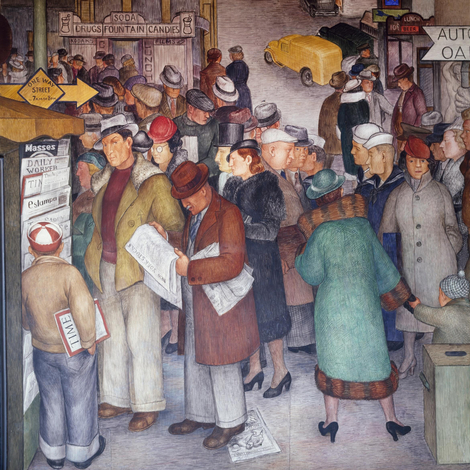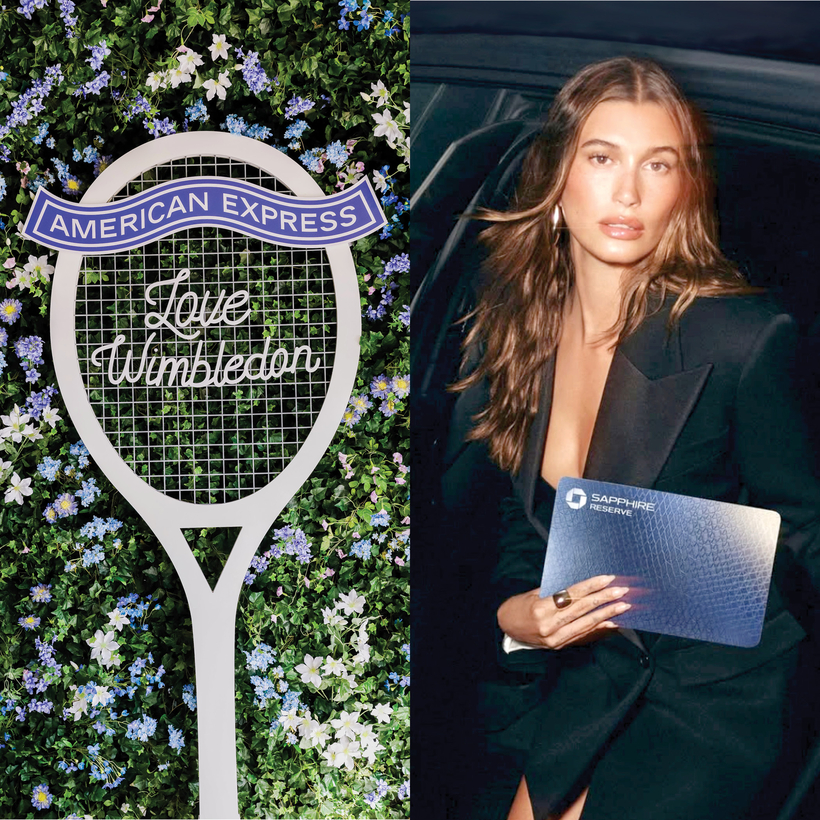At Wimbledon, a behind-the-scenes rivalry was unfolding as fierce as the ones on the court. American Express, the grizzled veteran of consumer debt, was hosting its premium cardholders inside the hallowed grounds, seating them in the fourth row of Centre Court and serving them high tea in a beige suite adorned with hanging petunias.
But just outside the grounds, Chase Sapphire, the feisty up-and-comer in the world of rectangular plastic, had rented a stately home for its customers. Tom Holland had been called in to play tennis on the house’s grass court while liveried butlers served sausage rolls and champagne. The rivalry was not mentioned, but the battle lines were clear to see.

For Allison Beer, the C.E.O. of Chase’s Card and Connected Commerce businesses, the Wimbledon party was a solid shot in the ongoing slugfest between Chase Sapphire and American Express. “We are after an affluent experience for affluent customers,” she says. But Bess Spaeth, who leads experiences for American Express, feigned unconcern: “I would say being down the street from Wimbledon is not being at Wimbledon,” she sniffs. “They can have a watch party and serve pizza. That doesn’t bother me.”
Ever since 2016, when Chase launched its Sapphire Reserve credit card in direct competition with the American Express Platinum Card (born 1984), the two companies have been engaged in a battle to attract high-income big spenders. To be clear, these are not cards for the highest of high rollers, such as the invitation-only AmEx Black Card, which reportedly costs $5,000 a year, with a $10,000 initiation fee. Nor do they rival the J.P. Morgan Reserve Card, which requires at least $10 million dollars under management with the bank. These cards are directed at the young (65 to 75 percent of all new cardholders are millennials and Gen Z–ers) with disposable income, a busy social life, and a terrible susceptibility to FOMO.

Before the pandemic, credit cards largely limited their rewards to points, access to airport lounges, and travel credits. Since then, there has been a massive shift in the benefits on offer—credits for restaurant bookings, digital-entertainment services, taxi rides—as the card companies increasingly aim to become lifestyle brands. But the biggest shift, says Nick Ewen, senior editorial director at the Points Guy, is “towards the experiential. It really has been an arms race.”
In some respects, it has always been this way. American Express has been putting on events for its members for 50 years. In the 1960s, cardmembers were offered a golfing trip with Arnold Palmer at the Saint-Nom-la-Bretèche golf club, near Paris, as well as the chance to attend a fashion show at the house of Dior. More recently, members were invited to attend pop-ups on the shore at Art Basel Miami Beach, where Ludacris serenaded cardholders.

Chase likes to market itself as the fresher, cooler version of American Express. In 2021, it bought the Infatuation—a popular New York–based restaurant-recommendations Web site—and brought the co-founders, Chris Stang and Andrew Steinthal, in-house. “[Chase was] really clear about, ‘Hey, we want you to come here and do what you’re good at, and we will do everything in our power to not—quote, unquote—crush the butterfly,’” says Stang.
The results were clear. This summer Chase invited cardholders to a dinner onstage at the Public Theater with Lin-Manuel Miranda, and there was a party at a private club in Montauk where Gwen Stefani performed. In Los Angeles, cardholders were invited to explore the sets of Apple TV+ shows including Severance, The Morning Show, and The Buccaneers. Meanwhile, they tapped Hailey Bieber and Erin and Sara Foster to star in its new advertising campaign. (American Express shot back by partnering with Dua Lipa for a series of pop-up stores across seven cities.)

But Chase is not alone in making incursions onto AmEx’s turf. Capital One, for so long the journeyman of the credit-card circuit, recently invited cardholders to a private island in the Florida Keys, where Neil Patrick Harris hosted a murder mystery. The card hosted a trip to Bordeaux in September, a meal under the lights at Nationals Park in October, and a dinner held in an installation created by the artist Hassan Hajjaj during Miami Art Week. It’s little surprise to learn that both Capital One and Sapphire have poached C-suite talent from American Express.
According to a report released by PYMNTS, a financial-services company, one in five cardholders in the United States carries a premium card—a card that requires an annual fee of more than $100 and comes with perks. This growth in popularity has coincided with record profits for the credit-card companies as well as increasing delinquency rates among young Americans. Some wonder whether these experiences—which largely take place in large metropolitan areas and which only a tiny fraction of customers go to—are little more than window dressing for increasingly exorbitant fees that cardholders can never recoup through the byzantine maze of credits, benefits, and subscriptions.

Is this promise of exclusive experiences out of sync with the very generation the credit-card companies are seeking to attract? Bilt, founded in 2019, offers a no-fee credit card that rewards users who pay their rent with it, a powerful incentive for Gen Z, which is notably the only renter-majority generation. It has led Bilt to attract around five million users.
However, it’s telling that even such a seemingly prudent card as Bilt can’t help but want to get in on the lucrative experience game. This fall it offered cardholders a Leon Bridges concert and a free pizza festival. Earlier this year, a new Bilt café opened in Manhattan’s downtown, and Bilt is soon to roll out a premium card—Bilt Card 2.0—that will offer more exclusive perks for $495 per year. Membership fees are money-spinners that even the most saintly credit card can’t do without, and experiential escalation seems set to continue until … well, the next credit crash.
Alyson Krueger is a New York–based lifestyle writer

